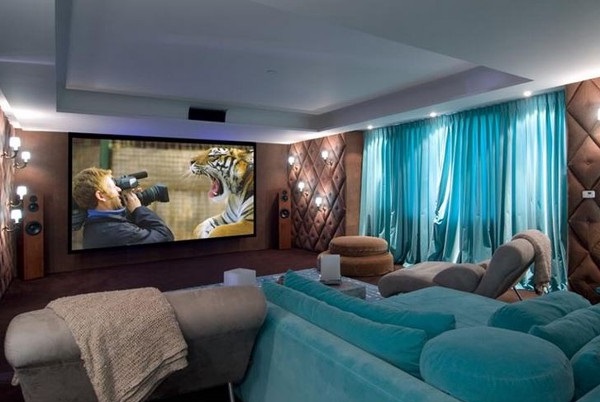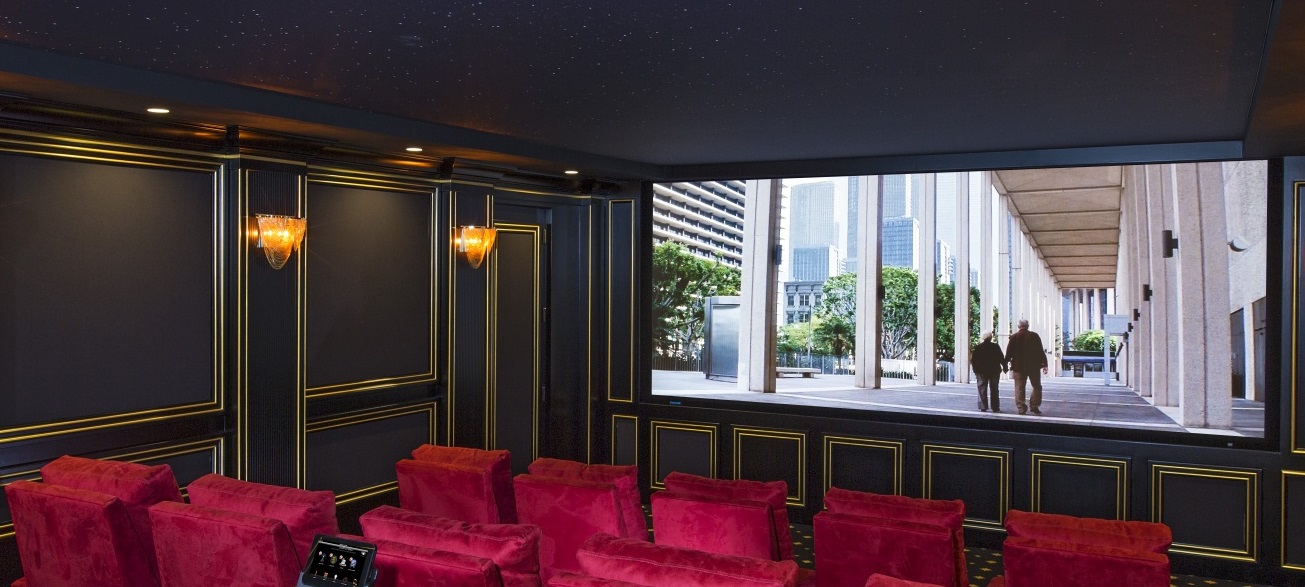Home cinema in the kit is a set of equipment for creating high-level surround sound complete with a high-quality image.
TV or Projector
A great way to recreate the atmosphere of a movie theater at home is to use a good projector. Compact models for home use are fully suitable for projecting a film onto a wall.
When choosing a projector, you should pay attention to the main characteristics:
- The distance required to display the video.
- Brightness. For a fully or partially darkened room, 800-1800 Lumens are enough for you. If you want to watch a movie during the day and not pull the curtains – 2000-3000.
- Resolution. If you play a movie on a wall or a special canvas, a value of 1280×800 or 1920×1080 is enough.
- Contrast. This option creates the color depth of the image.
- The optimum value is between 800: 1 and 1000: 1.
Or you can use a TV as the main device. In this case, the diagonal and resolution will be the most important parameters for viewing.
To select the optimal diagonal, measure the distance from the wall where the TV will hang or stand, to the sofa on which you will sit. Roughly the screen diagonal should be 3-4 times less than this distance.
The optimal resolution for a home theater can be considered FHD – 1920×1080. If your budget allows, you can take a high-definition TV and watch 4K movies. At the same time, remember that you will get such a stunning picture only if the video itself has this resolution, and ordinary films and television programs will not look better from this.
It is also worth paying attention to the type of matrix. You have a choice between LED and AMOLED. The difference is that AMOLED can show real black color, but at the same time such a TV is inconvenient to watch if sunlight is falling on it.
AV receiver
Sound is the next essential element in the work of the cinema. The ways this is implemented in a home theater system is an AV receiver and amplifier. The AV receiver is “the brain” of the whole complex. It carries out the adjustment and control in the home theater engaged, all sound and image sources are connected to it. For a full-fledged cinema experience at home I advice to use 9-channel receivers, which will qualitatively affect the sound of your audio system, navigate here to find the best model.
Speakers
By the way, about the audio system. The speaker system consists of at least five speakers, but it is better if there are six or seven of them. In the room, you need to correctly arrange the acoustics. Two speakers must be placed on the sides of the screen – they will create the volume of sound. Let one column stand in the center, and slightly pushed forward – it will voice the speech. To amplify low-frequency sounds, you need a subwoofer – usually, it is included in a set of 6 or 7 acoustic elements.

Home Theater Room
Lighting
It is worth taking care of darkening the room for watching movies. The fact is that any daylighting negatively affects both watching a movie from a TV screen and the image quality from a projector.
Soundproofing
Acoustic processing of rooms traditionally solves two problems: sound absorption and sound insulation. In the case of a home theater, with the right balance of sound absorption in the room, the correct, standard acoustic environment is formed, which significantly reduces the harmful effect of the room on sound (reflections) and creates an acoustic atmosphere similar to that in the recording studio, where the construction processing was performed.
Cable installation
Cables are often seen as a necessary evil, and the first question that comes to mind once all devices and speakers are wired is how to cover them up. Fortunately, many wiring accessories exist to simplify our task, whether they are cable ties, flexible sheaths, cable ducts or even storage boxes for power strips.
